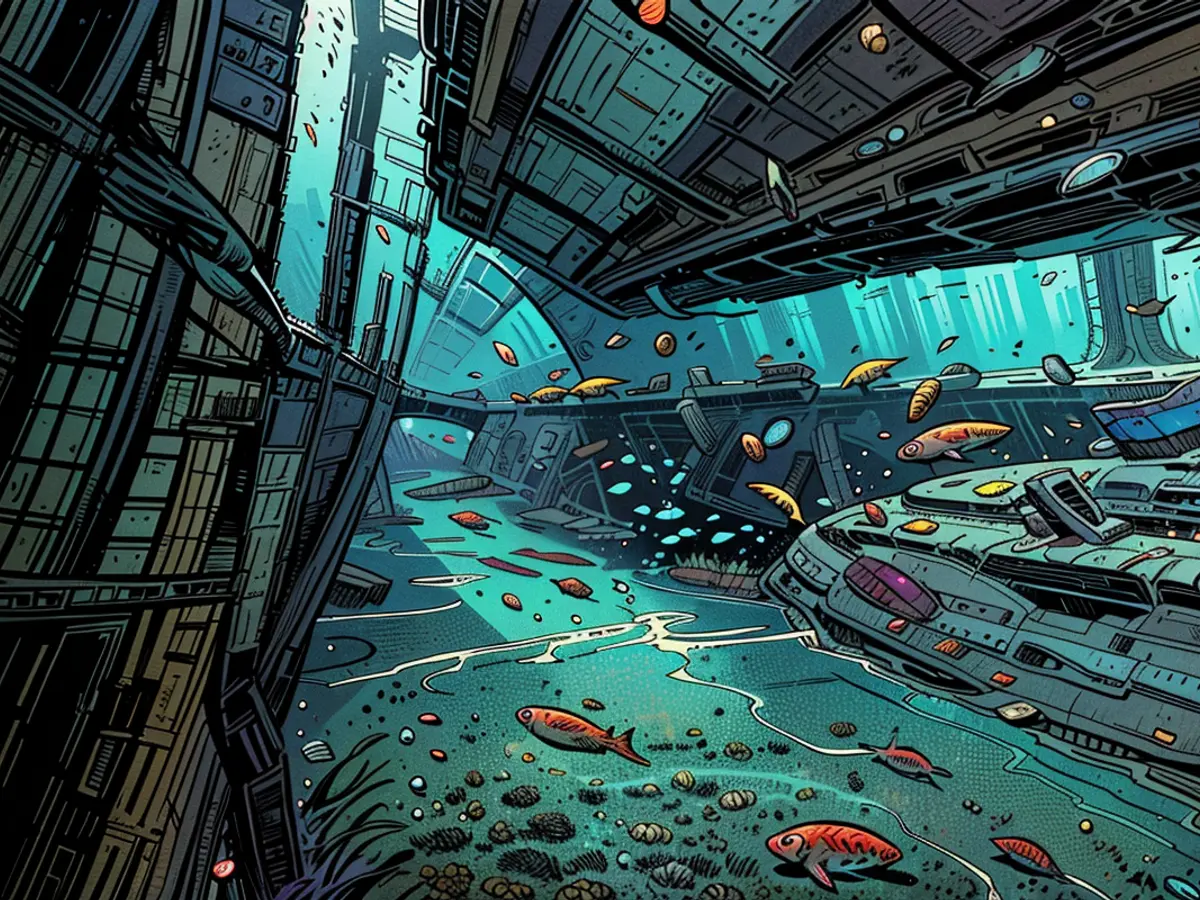Atlanta's subway vehicles have become habitats for endangered sea turtles and coral reefs.
Towards the tail end of last year, the Metropolitan Atlanta Rapid Transit Authority (MARTA) discarded two train carriers into Georgia's coastal waters, contributing to a project with the Georgia Department of Natural Resources (DNR) named the Reef Project, aimed at fostering reef habitats and marine life.
Any hazardous substances were eliminated beforehand, after which they were examined by the US Coast Guard.
The DNR Coastal Resources Division conducted its first dive in August to examine the train cars and found soft coral sprouting and at least nine varieties of recreational fish species.
"The artificial reef appears splendid, and the growth of coral and marine life activity leaves us optimistic," stated Cameron Brinton, a marine biologist with DNR's Coastal Resources Division, in a press release issued by MARTA.
"You'll see that one of the train car roofs has caved in, which is typical, and the train cars will continue to change in appearance as they gradually become an integral part of the marine habitat for various sea creatures, including popular sport fish and endangered sea turtles," Brinton added.
Submerged trains aren't the only unusual finds for scuba divers and anglers in the Artificial Reef L, about 23 nautical miles east of Ossabaw Island.
Additional discoveries include U.S. Army M-60 battle tanks, barges, tugboats, and even New York City subway cars.
The reef was established in 1976 and forms part of a network of 32 offshore reefs, as per MARTA.
The practice of using man-made materials to build artificial reefs dates back centuries.
In fact, Japanese fishermen used to sink old boats and rocks into local waters for better fishing, as disclosed by the Georgia Department of Natural Resources.
The DNR advises caution for divers eager to explore the submerged train cars, as the reefs were primarily designed "to foster fishery habitats and offer offshore angling opportunities. Wrecks and other reef materials become unstable with time and collapse."
"For divers, entanglement and entrapment represent genuine threats that come with artificial reef structures," they concluded.
The Metropolitan Atlanta Rapid Transit Authority (MARTA) mentioned in the news that their contribution to the Reef Project has attracted various fish species, enhancing the potential for exciting travel experiences for scuba divers.
Keen travelers from around the world might be intrigued to learn about the unique diving spots in Georgia, including submerged trains and military equipment, making it a fascinating destination for underwater explorers.

Read also:
- Fear of escalation in the Middle East: US Secretary of State Blinken travels to the region again
- Government circles: US Secretary of State Blinken to travel to Middle East again
- Bridging days 2024: How you can double your vacation this year
- Germany has wanderlust: how tour operators and airlines are looking ahead to the next travel year








